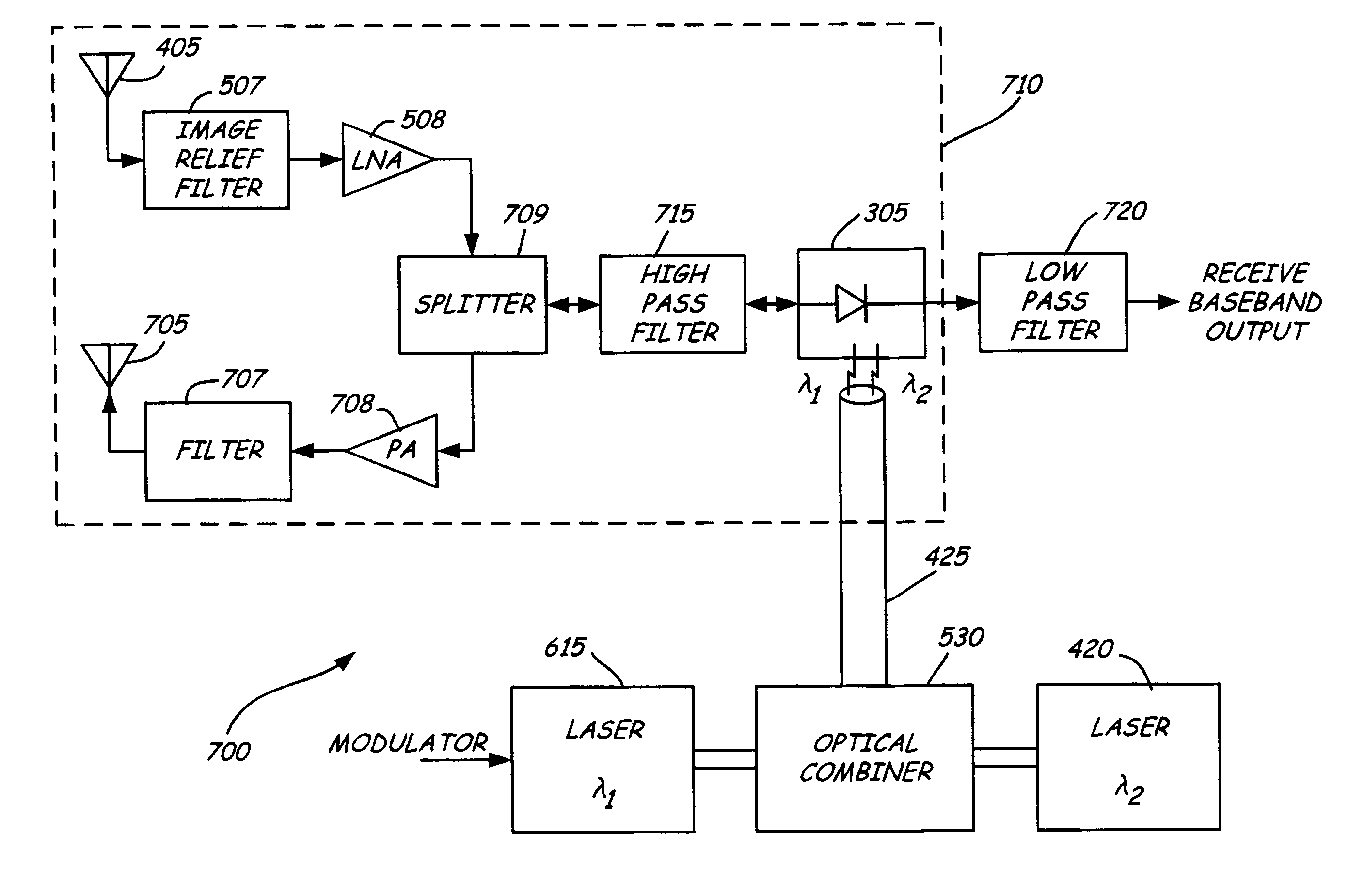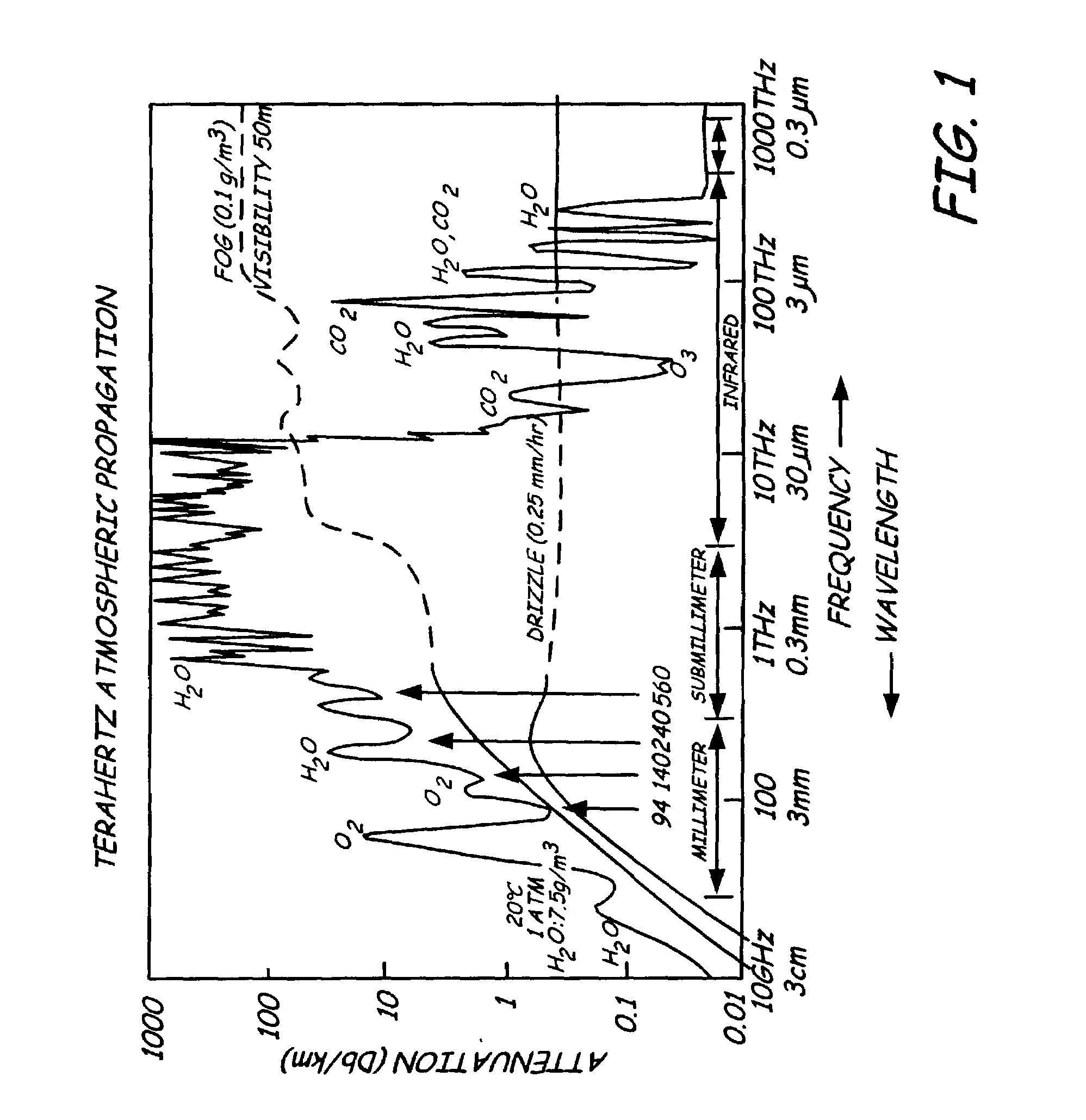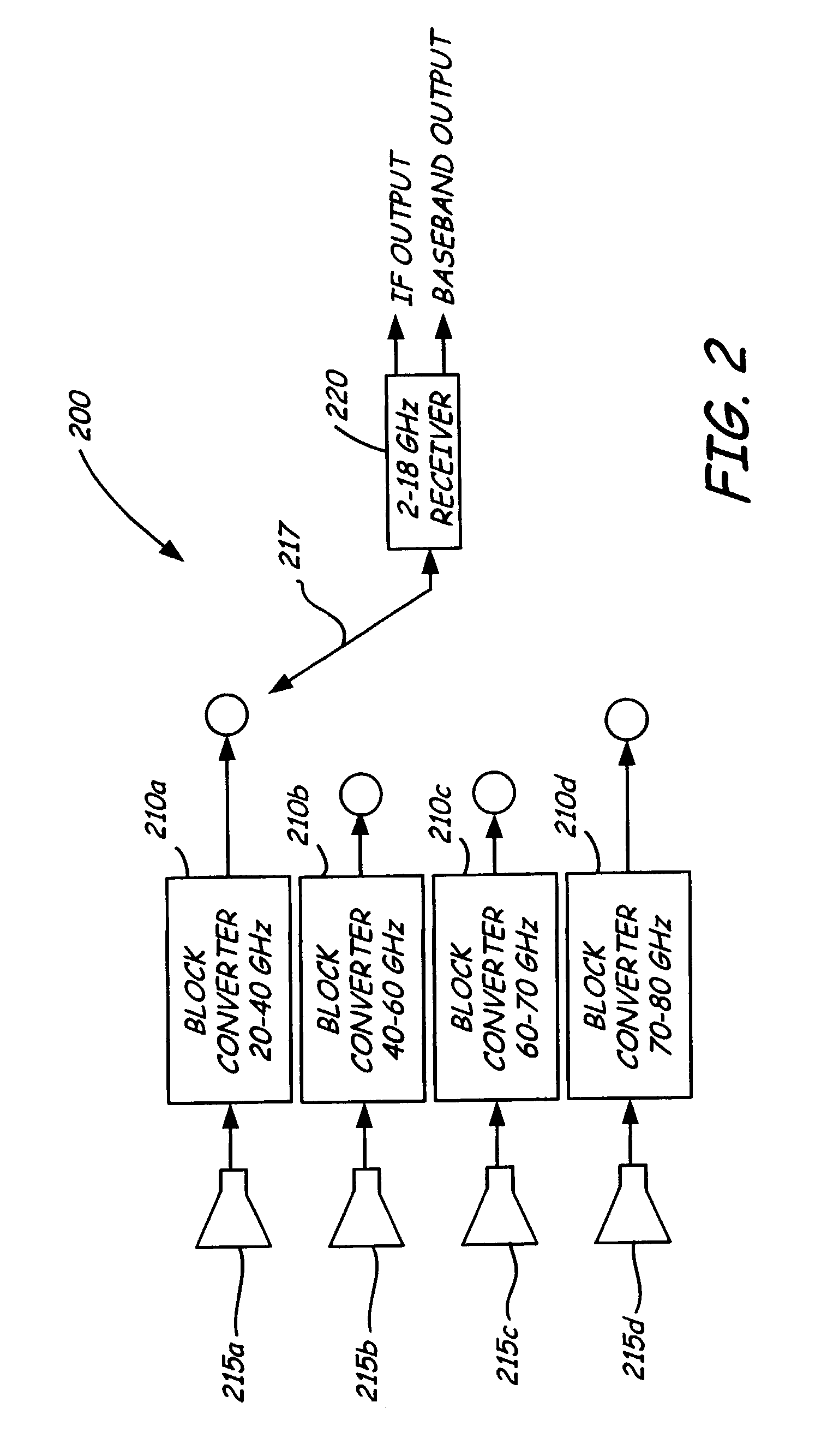Electro optical microwave communications system
a microwave communication and optical technology, applied in electromagnetic transmission, electrical equipment, transmission, etc., can solve the problems of difficult and expensive building of radio frequency circuitry for these frequency ranges
- Summary
- Abstract
- Description
- Claims
- Application Information
AI Technical Summary
Benefits of technology
Problems solved by technology
Method used
Image
Examples
Embodiment Construction
[0027]The implementation of a conventional receiver 200 for the terahertz frequency range is following the current architecture of millimeter wave receivers, that is, a group of narrowband block converters 210a–d in parallel as shown in FIG. 2. Due to component technologies, primarily the limited frequency response of each semiconductor process or structure, only a 10–20 GHz bandwidth is typically attainable. Tunable frequency synthesizers spanning any significant frequency range are difficult or impossible to implement to support a superheterodyne converter architecture. Thus a typical surveillance system consists of a bank of individual block converters 210a–d, each spanning 10–20 GHz using a fixed local oscillator (not shown), and typically each with its own antenna 215a–d to eliminate a high-loss microwave switching subsystem. These block converters 210a–d typically convert down to a 2–20 GHz range and are selected by a switch 217. A tunable receiver 220 processes and / or demodul...
PUM
 Login to View More
Login to View More Abstract
Description
Claims
Application Information
 Login to View More
Login to View More - R&D
- Intellectual Property
- Life Sciences
- Materials
- Tech Scout
- Unparalleled Data Quality
- Higher Quality Content
- 60% Fewer Hallucinations
Browse by: Latest US Patents, China's latest patents, Technical Efficacy Thesaurus, Application Domain, Technology Topic, Popular Technical Reports.
© 2025 PatSnap. All rights reserved.Legal|Privacy policy|Modern Slavery Act Transparency Statement|Sitemap|About US| Contact US: help@patsnap.com



